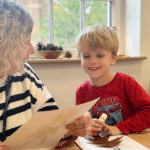



STEM stands for Science, Technology, Engineering and Mathematics.
Introducing STEM concepts to toddlers can provide immense benefits for their overall development and learning. The early years are a critical period for brain development. Toddlers are naturally curious and inquisitive about the world around them, they are natural scientists. At that age they are starting to ask more questions about the world around them through speech, investigating and exploring new experiences etc.
Capitalising on this curiosity through purposeful STEM activities can nurture a lifelong love of discovery and problem solving.
Experts recommend integrating STEM into everyday play and routines. Simple activities using household materials allow toddlers to explore foundational concepts in science, maths, and engineering. Measuring ingredients for play dough or building towers with blocks introduces STEM in a fun, hands-on way.
STEM promotes essential skill development across the 7 areas of learning. In terms of Personal, Social, and Emotional growth, it encourages turn-taking, social interactions, and environmental exploration. Communication and Language skills are enhanced as children pay attention to their chosen activities, understand sentences, and express themselves using diverse vocabulary. Physical development through sensory experiences, hand-eye coordination, and independent hand movements.
STEM also contributes to Literacy by encouraging mark-making and material exploration, while mathematical concepts are reinforced through spatial awareness, counting, and structural creation. Understanding the World is enriched as children explore objects and their varied uses, while Expressive Arts and Design flourish through experimentation with different media and imaginative representation. Through activities like pouring, scooping, stacking, and experimentation, toddlers refine both their cognitive and motor abilities, laying a strong foundation for future learning and development.
The best part about STEM activities is that they can happen in all areas of a setting at any time of the day! STEM learning happens naturally through a toddler’s everyday play and interactions. As practitioners, we can look for opportunities to introduce STEM concepts during routine activities.
Another great wait to expand STEM play is by adding a sensory element as toddlers use their senses to try and understand the world around them.
Introducing STEM during the toddler years through informal, play-based activities provides a wealth of developmental benefits. Nurturing curiosity and exploration builds a life-long love of learning and discovery.


Now we know what Toddlers like to do, how can you create opportunities within your setting and at home?
Resources: cups of different sizes, jugs, towel, paint to colour the water, spoons, bowls, measuring jugs
Step 1: Lay the towel over table to help with spillages, set up cups, jugs, bowls and spoons on the towel, (make sure the amount you have out is manageable).
Step 2: Bring over jug with warm water and start to half fill the jugs on the table (can add the paint to the water before filling up the jugs if want to explore colour mixing)
Step 3: Demonstrate to the children how to hold the jug when pouring.
Step 4: Support the children when they are pouring, be encouraging, doesn’t matter if they spill.
Considerations:
Why is this great for Toddlers? Toddlers love role play experiences that they have in everyday life, water play is a great sensory experience, meaning this activity is just perfect.
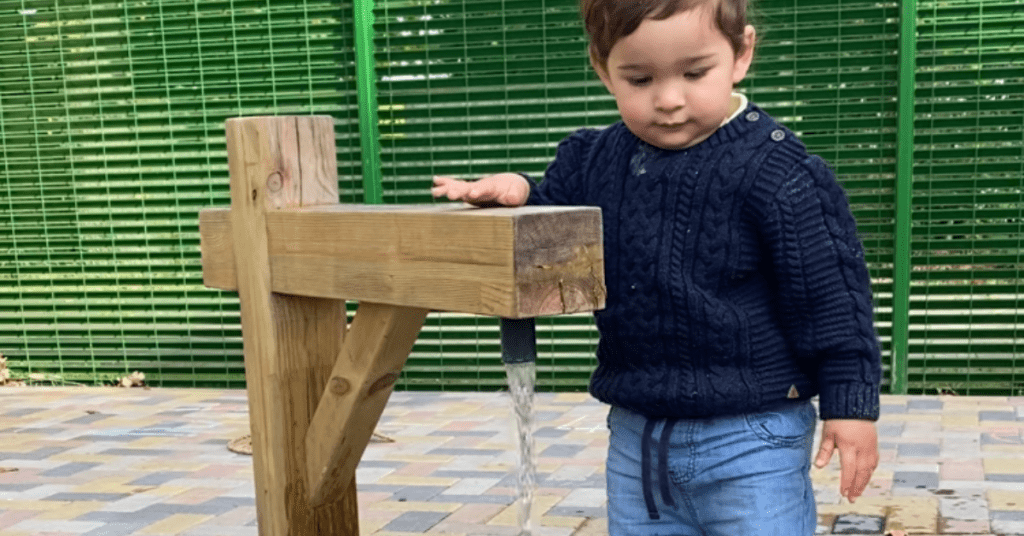

Resources: cooked spaghetti, tuff tray, play dough scissors (are plastic).
Step 1: Fill the tuff tray with the cooked spaghetti
Step 2: Demonstrate to the children how to use the scissors (they may use both hands at first to work them).
Step 3: Allow them some time to use both hands, before encouraging them to use one hand when cutting.
Considerations:
Why is this great for Toddlers? Toddlers love messy play activities, as well as learning and developing new skills that offer a challenge. Messy play also provides open-ended opportunities for toddlers to problem solve. For example, how can they transport water or sand from one container to another? What happens when they mix two textures together? Can they build a tower with glue and sticks that doesn’t fall down?
Resources: plastic or paper cups, lolly sticks, pegs, tape.
Step 1: Lay the resources out on the floor space.
Step 2: Demonstrate to the children how they can use the resources to build.
Step 3: Allow the children to build and create themselves, support them when ask, encourage them to try first.
Considerations:
Why is this great for Toddlers? Toddlers love being creative and building, and enjoy using different materials for this, as this supports their imagination, and they start to develop their problem solving skills.


Resources: mixing bowls, large and small spoons, flour, oil, jugs, paint, herb plants, spices, recipe cards.
Step 1: Using the recipe card with pictures helps the children follow what needs to go in next/ lay out in the ingredients in the order they need to go in.
Step 2: Allow the children to help make the play dough by adding in the ingredients and mixing them together. Allow them the choice of colour and smell.
Step 3: Encourage them to use what materials to use with the play dough.
Considerations:
Why is this great for Toddlers? Toddlers love being helpful and being given responsibilities and being asked what type of play dough they would like to play with.
Fennies Graduate


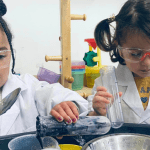

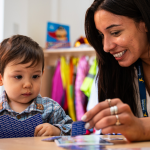

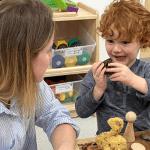

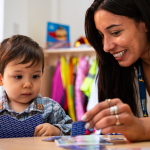



View All
This website uses cookies so that we can provide you with the best user experience possible. Cookie information is stored in your browser and performs functions such as recognising you when you return to our website and helping our team to understand which sections of the website you find most interesting and useful.
You can read out full privacy policy here
Strictly Necessary Cookie should be enabled at all times so that we can save your preferences for cookie settings.
If you disable this cookie, we will not be able to save your preferences. This means that every time you visit this website you will need to enable or disable cookies again.